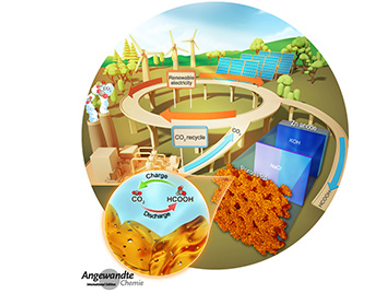In this issue, J. M. Goicoechea and H. Grützmacher review the chemistry of the 2-phosphaethynolate anion. How does this simple ion enable access to heterocycles, π-conjugated molecules, and metal phosphides? In Minireviews, C. J. Bettinger discusses materials and structures for ingestible electromechanical medical devices, and A.-K. Schneider and C. M. Niemeyer summarize DNA surface technology for life and materials sciences.
In the Communications section, J. Yao et al. describe reversible aqueous zinc–CO2 batteries based on interconversion of carbon dioxide and formic acid (see picture). J. C. Lee et al. observed α-synuclein amyloid formation by means of segmental 13C labeling and Raman microspectroscopy. K. A. Scheidt et al. devised a a cooperative hydrogen bond donor–Brønsted acid system for the enantioselective synthesis of tetrahydropyrans.
The entire team of Angewandte Chemie would like to thank all authors, referees, and readers for their support throughout 2018 and we wish everyone happy holidays and a great year in 2019.
- Angewandte Chemie 52/2018: Happy Holidays,
Angew. Chem. Int. Ed. 2018, 57 (52).




